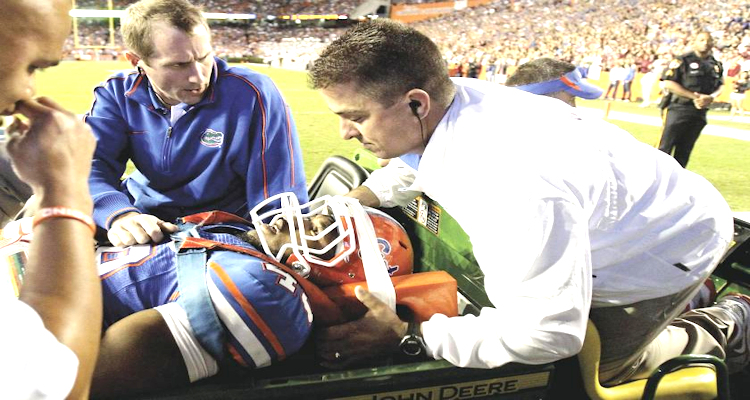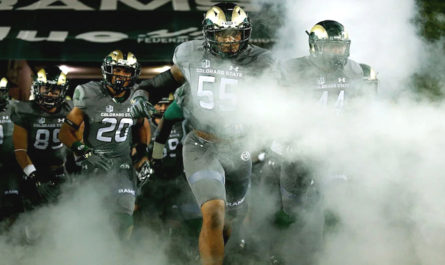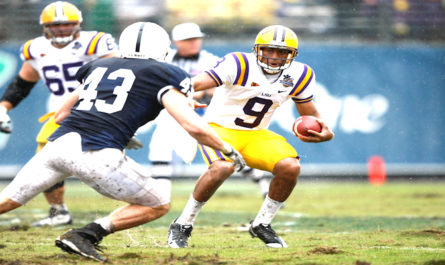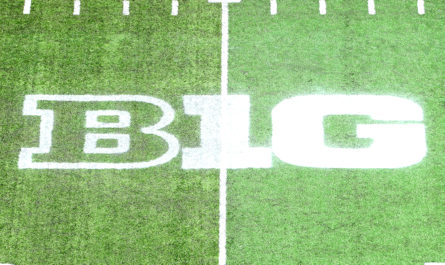The caution came at the tail end of a fast telephone call to the physician. Catherine Clawson missed her routine check-up with her oncologist this spring due to the fact that the coronavirus pandemic interrupted her schedule, and she wished to set a brand-new date for a see. Clawson had actually seen her physician every 3-6 months given that she was detected with breast cancer simply days after her other half, Wake Forest football coach Dave Clawson, won the school’s very first championship game in 8 years back in December 2016.
She is otherwise healthy– “a survivor,” her other half states happily– however her physician was still stressed, and informed her the pandemic held included danger due to the fact that of her history.
Three years earlier, Catherine Clawson went through chemotherapy, and the treatment left her with a low count of leukocyte, making her body immune system susceptible.
During supper the night of the telephone call, Dave and Catherine discussed their alternatives. He felt a duty to be there for his group. She was utilized to the sacrifices and time invested apart. So they decided.
“There’s no chance I’m going to do anything that would put her at danger,” Dave Clawson stated.
2 Related
Now, a month far from the arranged kickoff of the 2020 football season, Clawson is investing the majority of his time at Wake’s football centers, oversleeping his workplace and communicating with Catherine by phone.
“Coaching 110 to 120 players with a personnel of 50, how could I go house during the night and inform my partner there was no chance I was available in contact with COVID-19?” Clawson stated. “I’m sure that college football will have requirements, and individuals will get evaluated, however it does not indicate that the day prior to or the day after you didn’t have contact with the infection.”
When news of Clawson’s choice broke, among the very first messages that pinged on his phone originated from Penn State football coach JamesFranklin “Hang therein, bro,” Franklin texted. He comprehended Clawson’s predicament. Franklin, too, will invest the season apart from his household instead of run the risk of contaminating his child, who has sickle cell illness.
Clawson stated these decisions also use to other members of his personnel who are at danger. In addition, there are numerous older coaches around the nation who fall under a higher-risk age group. Plus, there are much more who cope with older relative or have loved ones with underlying health conditions. Players, too, have household fighting other health problems, or included their own danger elements, like asthma, sickle cell illness or lupus.
On Wednesday, UConn ended up being the very first FBS group to cancel its football season due to the fact that of the pandemic.
“I’d be surprised if every personnel in America does not have somebody who needs to decide,” Clawson stated.
Wake Forest’s Dave Clawson decided to separate from his partner, a cancer survivor, to safeguard her from possibly capturing COVID-19 Thomas B. Shea – USA TODAY Sports
As administrators work to create a strategy that will enable college football to be played in 2020, the conversations are strengthened by among the couple of truths doctor understand for particular about COVID-19: Risk of issues is most affordable amongst young, healthy individuals, according to information from the Centers for DiseaseControl But that does not indicate there isn’t a substantial part of the higher college football environment– coaches, authorities, support personnel and relative– that should make some challenging options in between the sport they enjoy and the risk the infection may posture.
“These [college football] bubbles do not consist of simply youths,” statedDr Graham Snyder, the medical director of infection avoidance and medical facility public health at the University of Pittsburgh Medical Center.
North Carolina coach Mack Brown is 68, however he stated he does not like to consider himself as being especially old.
“I’m simply extremely knowledgeable,” he stated in late July, a couple of weeks after his group closed down voluntary exercises following a COVID-19 break out.
By age or experience, nevertheless, Brown remains in rarified air. He’s the second-oldest head coach in FBS, and while he’s not at the top of the danger curve for the infection, he’s considerably closer to it than his players.
Brown stated he’s taking additional preventative measures. He stated he has actually invested little time anywhere besides his home or the Tar Heels’ football center. He uses a mask all over he goes. He invested the spring exercising, aiming to get in much better shape, so his body would, preferably, be much better prepared to ward off the infection, needs to he end up being contaminated.
Still, the danger is genuine, and there’s just a lot Brown can do to alleviate that.
UNC’s Mack Brown, the second-oldest coach in FBS, is taking additional preventative measures due to the fact that of his age. UNC Athletics/Mike Jones
“It’s my task to lead, particularly throughout a time of crisis,” Brown stated. “What I required to do was pass the standards from the CDC, and take as couple of threats as I can however still lead. By taking less threats and remaining in much better shape, I’m being an excellent good example for the players.”
At Kentucky, offending line coach John Schlarman is following a comparable method. He fought cancer in 2015, and he comprehends that puts him at higher danger. That’s in fact been a good idea, he stated. It’s inspiration to concentrate on security.
“If I didn’t have cancer, would I have been as diligent of that? Who understands, however most likely not,” Schlarman stated. “It puts me at an increased level of awareness.”
And yet, Schlarman stated going back to football was never ever an especially hard choice. It’s his task, and he prepares to keep doing it– a minimum of in the meantime.
“I’m definitely hoping that’s not a bridge I need to cross,” Schlarman stated.
Schlarman’s method is a sign of the larger risk-reward analysis around college football, it appears. In aJune study of 73 college football players, more than 80% stated they were comfy practicing and playing, even if school was not considered safe to open for the basic trainee population.
The favorable test results that have actually closed down exercises at schools like North Carolina, Ohio State and Michigan State given that players went back to school have not done much to change that method either, stated Kentucky linebacker Josh Paschal.
“It may be the finest thing possible due to the fact that cases are coming out now however we’re finding out how to manage it and handle it early,” Pascal, a cancer survivor, stated. “So by the time the season comes, it’s force of habit.”
When the infection hit, Paschal connected to group fitness instructors. It’s been less than a year given that he ended up immunotherapy after being detected with a deadly cancer malignancy, and he was worried he may be at greater danger for COVID-19, too. Kentucky’s medical personnel consulted with his oncologists, and the news was great. His treatment, unlike Catherine Clawson’s, assisted improve his body immune system, they stated.
“As far as being something I was truly concerned about,” Paschal stated, “that cleaned up quick.”
![]() Paschal (left), a cancer survivor, connected to group fitness instructors about COVID-19 Kentucky Athletics
Paschal (left), a cancer survivor, connected to group fitness instructors about COVID-19 Kentucky Athletics
But Paschal might be the exception. Last week, The Washington Post reported on a personal conference in which SEC players pressed the league for much better details on security preventative measures and were informed, “We’re going to have favorable cases on each and every single group in the SEC. That’s an offered. And we can’t avoid it.”
Meanwhile, players from the Pac-12 united to pen an open letter to the league, released by The Players’ Tribune, threatening to pull out of fall camp unless a series of needs, consisting of necessary security requirements and eliminating liability waivers, are satisfied. Those needs followed the statement by Virginia Tech CB Caleb Farley (2019 first string All- ACC) that he ‘d remain the season to get ready for the NFL draft instead of run the risk of direct exposure to the infection.
Multiple ACC players, speaking on the condition of privacy, stated they wished to play, however shared comparable issues about the infection, with one gamer stating of a possible league-wide opt-out, “It’s certainly possible.”
Amid Michigan State’s current quarantine, lineman Jordan Reid shared issues by means of Twitter, too: “Guys are evaluating favorable throughout the nation left and right … why exists still conversation on a season? Why is it taking so long to make a rational choice? Hmm let me think REVENUE.”
Guys are evaluating favorable throughout the nation left and right … why exists still conversation on a season? Why is it taking so long to make a rational choice? Hmm let me think REVENUE #NCAA #B 1G10
— J.Reid (@jordanreid58) July 24, 2020
And one ACC gamer stated his concerns do not end at the locker space door. Like Clawson and Franklin, players throughout the nation have relative at greater danger, and they’re now required to make the very same options in between playing football and seeing their liked ones.
“If I get ill and I provide it to someone I appreciate and they die due to the fact that you desire cash?” the gamer stated. “Now you have an issue. I’m not attempting to be put in a position where I need to carry out and put my body on the line and also put my household in jeopardy.”
While various players are speaking up about security procedures, previous Boston College linebacker Mark Herzlich questions if the larger issue might originate from players reluctant to observe medical guidance.
Herzlich was detected with cancer following his junior season at Boston College in 2007, and after a year sidelined for treatment, he went back to play less than 10 months after his last round of chemo. Looking back, he questions if COVID-19 would’ve sufficed to stop his impressive resurgence story.
” I may’ve had a body immune system decrease or a weaker heart. That occurs through cancer,” Herzlich stated. “So I’m sure my physicians would’ve never ever let me return, however I would’ve wished to return. … I feel in one’s bones how persistent I was at 18 or 19 years of ages. Even if I comprehended the threats, I remained in the frame of mind of, ‘Put me on the field. I simply wish to play football.’”
Dave Clawson stated Wake Forest is taking additional preventative measures with players it understands are susceptible due to the fact that of conditions like asthma, and he has actually informed every gamer their scholarship will be honored, even if they select to remain the season.
Knowing the threats is something, however what occurs if a gamer does not understand he has a hidden condition and is then exposed to the infection?
“That’s the worst-case circumstance,” Herzlich stated. “That would be ravaging.”
There are also possible long-lasting health impacts. On Monday, the mom of Indiana offending lineman Brady Feeney published a message on Facebook about her child’s fight with COVID-19, stating that in spite of being “in best health, excellent physical condition,” Feeney wound up in the emergency clinic with breathing issues and now has possible heart concerns as an outcome of the infection. She called the experience “14 days of hell.”
“Bottom line,” Feeney’s mom composed, “even if your child’s schools do whatever right to safeguard them, they can’t safeguard them.”
It’s the unidentified that provides such enormous obstacles for a college football season, stated Snyder, the Pittsburgh epidemiologist. So far, he stated, the science recommends little long-lasting effect for individuals who recuperate rapidly from COVID-19, however there’s also little genuine information when it pertains to such a brand-new infection. There’s plainly a connection in between hidden conditions and the seriousness of COVID-19 signs, too, Snyder stated, however that’s real of practically all infections. Just just how much COVID-19 is worsened is still difficult to inform, he stated.
In the end, Snyder stated, fall sports total up to something of a massive epidemiological experiment.
“We’re starting something that’s never ever taken place prior to,” he stated.
Snyder stated the success or failure of fall sports may boil down to simply how well the bubble around professional athletes can be kept, and that, too, provides space for adequate pessimism.
There are success stories. Oklahoma, for instance, had a handful of favorable tests as players went back to school, however none given that. On the other hand, Clemson saw its little number of favorable test results spike after players were currently inside the bubble.
Brown stated UNC continues to work to recognize simply how its bubble was popped, however even when it pertains to get in touch with tracing, players are mainly on the honor system.
“In theory, if you go into individuals into the bubble and no one in the bubble has an infection, then it needs to be safe to do basically anything,” Snyder stated. “But in practice, a bubble is an exceptionally difficult thing to keep.”
Paschal stated he’s been pleased with how his colleagues at Kentucky have actually reacted to the standards put in location by the training personnel, and he thinks keeping the bubble isn’t much various from other parts of the college football experience– that it takes the entire group drawing in the very same instructions to discover success. Players get that, he stated.
Herzlich isn’t so sure. It’s a lot to ask of a lot of college trainees to efficiently separate from anything outdoors sports for months at a time, he stated, and the threats just increase if the basic trainee body go back to school, too.
“You can conceive the impacts on you or your roomies or your group, however it’s so difficult to fathom the trickle-down impact of one person on a group getting it throughout the season,” Herzlich stated.
“Coaching 110 to 120 players with a personnel of 50, how could I go house during the night and inform my partner there was no chance I was available in contact with COVID-19?”.
Wake Forest head football coach DaveClawson
And that, too, will boil down to some challengingdecisions Herzlich questions if firm guidelines require to be in location that would require players to be dropped from the group if they leave their bubble.
For his part, Clawson stated he has actually talked with players about the require to adhere strictly to the guidelines put in location for security. All college football players make sacrifices, he informed them, however this year is going to need more.
Yet when the Clawsons discussed supper about the season ahead, the discussion wasn’t about sacrifice. They spoke about military members who leave their households for months at a time to combat overseas. This barely compared. They spoke about the doctor on the cutting edge of the COVID-19 battle, too. They were materializing sacrifices.
But he acknowledged it still will be an obstacle without his partner, Catherine, by his side.
“She’s the one, most likely more than anybody in the world, that keeps me well balanced and level throughout the season,” Clawson stated.
This, Dave Clawson stated, is simply what requires to be provided for college football to be played in 2020.
“People have actually texted me and stated, ‘Oh male, that’s a truly difficult choice,’” Clawson stated. “I keep stating it’s not a tough choice. It’s a regrettable scenario. The choice was simple. I had no option. It simply draws we need to do that.”




